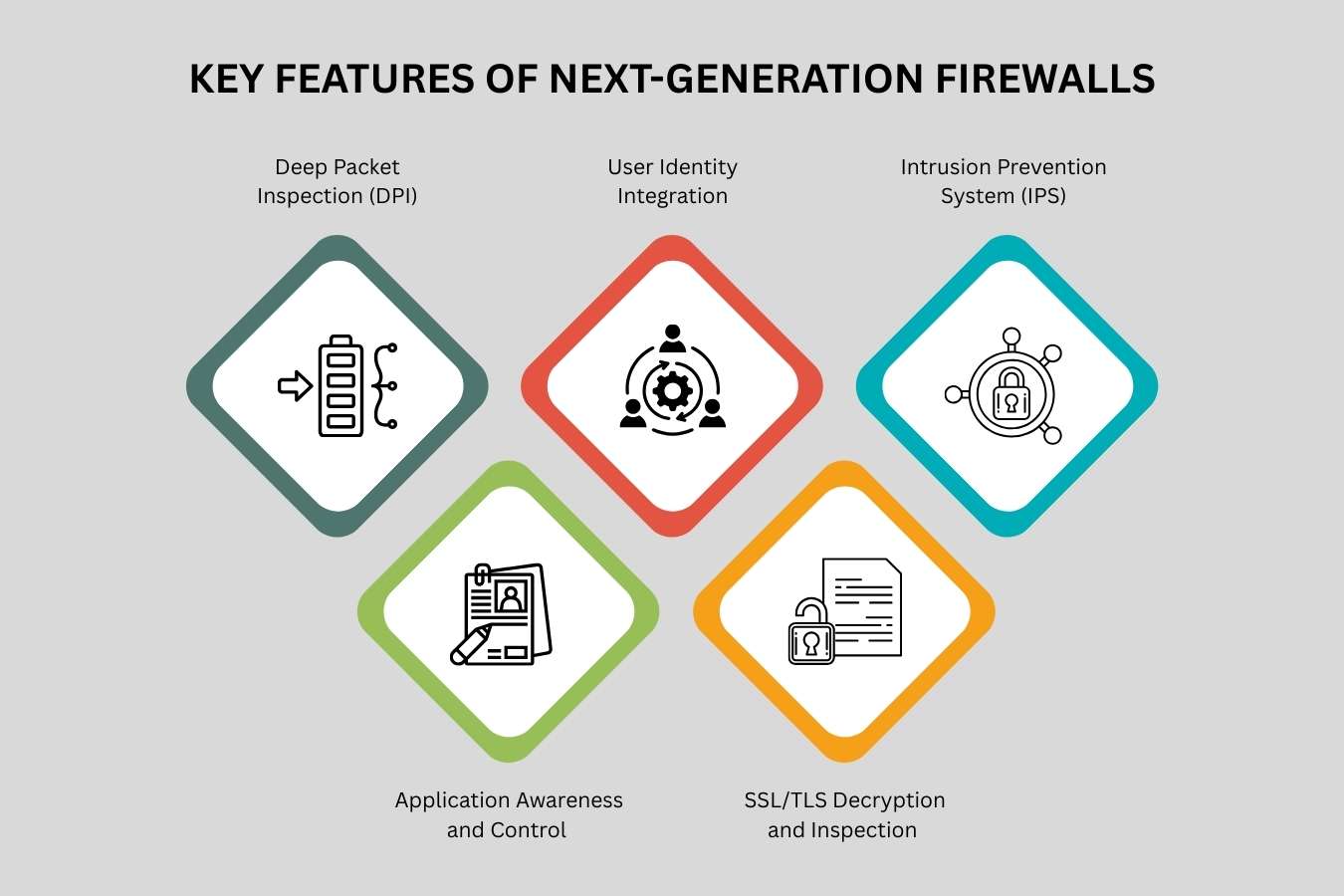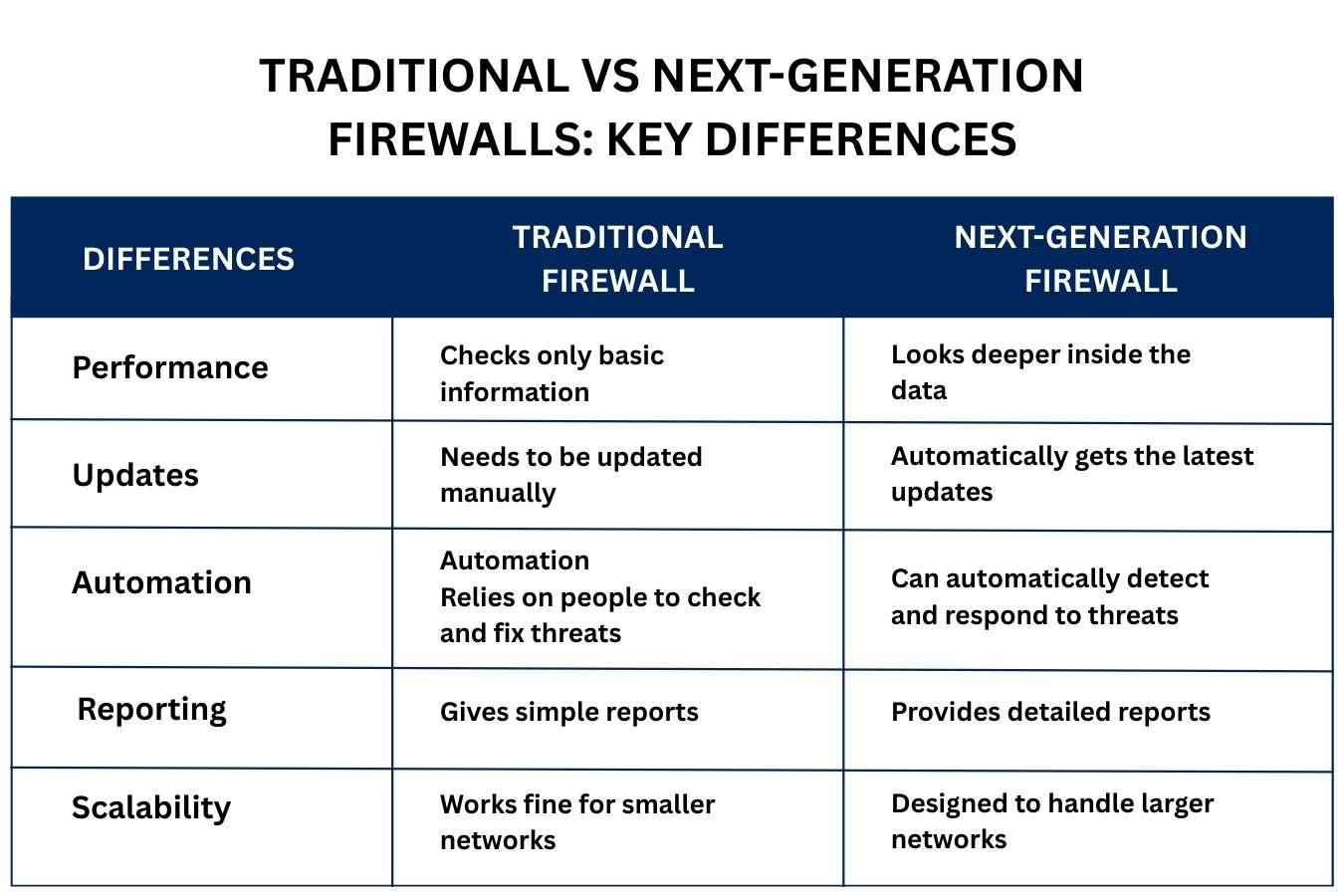Every website needs a virtual security guard. Hackers and cyber criminals are always on the prowl. They are always looking for vulnerabilities in your systems. This is where firewalls come in. They are a type of security system that acts as a barrier between internal and external network systems.
But cyber threats are continuously evolving. Traditional security measures are no longer enough to protect sensitive data and networks. So, security measures need to be updated as well. This updated security comes in the form of next-generation firewalls, or NGFWs. This article explores everything you need to know about these firewalls and their use.
What are Next-Generation Firewalls and How do they Work?
Let us take an example. An employee in an office downloads an attachment file he received in an email. The document contains malicious code intended to infiltrate the network. In this scenario, a traditional firewall might block the file based on its size and port. But it is not able to read the actual content of the file. So, malware can still pass through unnoticed.
Next-generation firewalls, on the other hand, can analyze the file and not just the metadata. It can compare file patterns against known malware signatures. It can also detect suspicious scripts and injection attacks.
Ultimately, these firewalls are akin to hiring a bigger and better security guard to protect your data and network systems. They manage and monitor the flow of data between different networks. But what do these firewalls have that makes them a force to be reckoned with?
Key Features of Next-Generation Firewalls

NGFWs bring with them a wide range of features and functions. These are important in a robust security system. Some of the most important features are listed below.
1. Deep Packet Inspection (DPI)
NGFWs analyze the actual content of data packets. They can do this through the use of Deep Packet Inspection. DPI enables them to detect threats hidden within files, scripts, or protocols. This allows the firewall to identify malware, viruses, and anomalies. DPI ensures that malicious content is blocked before reaching endpoints.
2. User Identity Integration
Next-Generation Firewalls integrate with identity management systems. They can then enforce policies based on user accounts rather than IP addresses. This ensures that access controls are aligned with roles and functions. For example, only finance employees may access financial data. This improves compliance, auditing, and accountability. It also allows flexible security management across both on-site and remote users. This makes it a critical feature for modern and dynamic workplaces.
3. Intrusion Prevention System (IPS)
NGFW’s Intrusion Prevention System constantly monitors network traffic. It looks for known vulnerabilities and attack patterns. IPS blocks a user immediately whenever suspicious activity is detected. It also alerts security systems when it notices any malware trying to enter the system. This helps prevent breaches, data loss, or system downtime. Unlike traditional firewalls, IPS provides deeper threat detection, stopping attacks before they spread.
4. Application Awareness and Control
Next-Generation Firewalls can identify specific applications. This allows organizations to create rules based on the type of application rather than just network information. For example, NGFWs can block streaming services while allowing essential tools like email. This improves security and productivity. It ensures that only authorized applications are used. Ultimately, it reduces the risk of malware and bandwidth use.
5. SSL/TLS Decryption and Inspection
SSL stands for Secure Socket Layer. And TLS stands for Transport Layer Security. They are protocols that authenticate internet communications. Encrypted traffic often hides malicious content. This makes it harder for traditional firewalls to protect networks. Next-generation firewalls can decrypt SSL/TLS traffic, inspect it for malware, and then re-encrypt the data.
This means that organizations can maintain strong privacy while applying security policies across all traffic. It is necessary as encrypted traffic accounts for the majority of network communications.
These features definitely sound exciting. But are next-generation firewalls truly better than the traditional ones? What are the differences between them?
Traditional Vs Next-Generation Firewalls: Key Differences

NGFWs are said to be an upgrade on traditional firewalls. But it is very important to put them against each other to see where they stand. In the differences listed below, the metrics we are using are: performance, updates, automation, reporting, and metrics.
| Differences | Traditional Firewall | Next-Generation Firewall |
| Performance | Checks only basic information | Looks deeper inside the data |
| Updates | Needs to be updated manually | Automatically gets the latest updates |
| Automation | Relies on people to check and fix threats | Can automatically detect and respond to threats |
| Reporting | Gives simple reports | Provides detailed reports |
| Scalability | Works fine for smaller networks | Designed to handle larger networks |
1. Performance:
Traditional firewalls check only basic information, like IP addresses and ports. This makes them fast but not smart. They can easily miss hidden threats. NGFWs look deeper inside the traffic. They might be slow, but they are thorough and efficient
2. Updates:
Traditional firewalls need manual updates. If left unupdated, they can be a serious vulnerability. Next-generation firewalls regularly update themselves with the latest information. This ensures that the network systems are always safe.
3. Automation:
Traditional firewalls need someone to watch and fix problems manually. NGFWs can automatically detect issues. They can then respond quickly without waiting for human help.
4. Reporting:
Traditional firewalls give simple reports like allowed or blocked traffic. Next-generation firewalls give detailed reports showing which app, user, or file caused problems.
5. Scalability:
Traditional firewalls work fine for small networks. But they can have problems handling huge and intricate network systems. NGFWs are designed to handle larger networks with more users and devices.
Even though NGFWs are a better form of firewalls, they still have their limits. There are some areas in which they fall short. What are these?
Limitations of Next-Generation Firewalls

Every coin has two sides. NGFWs might be more efficient in securing your data, but they do have their disadvantages. Their limitations play a key role in deciding whether to implement these firewalls.
1. Higher Cost:
Next-generation firewalls are more expensive than traditional ones. The advanced features and automatic updates require more processing power. Small businesses with limited budgets might find it hard to afford them.
2. Complex Setup:
These firewalls need careful setup and skilled staff to configure policies and encryption. Without the right expertise, they can be difficult to manage. This makes them harder to use than simpler firewalls
3. Impact on Performance:
NGFWs inspect traffic deeply and decrypt encrypted data. This can slow down network performance. This may cause delays in loading websites on busy networks.
Case Study: How Northwest Savings Bank Implemented Next-Generation Firewalls
Northwest Savings Bank adopted Palo Alto Networks’ NGFWs across primary and backup data centers. They integrated functions such as traffic inspection, content filtering, SSL decryption, intrusion prevention, and application-level security.
The result led to better threat detection. Within a week, several malicious files were caught that traditional antivirus solutions missed. It also streamlined security management.
Conclusion:
Next-generation firewalls have become a crucial component of cybersecurity. Cyber threats are always becoming more complex. Outdated security systems can no longer cut it. Investing in NGFWs can help you secure your data systems and reputation. Ultimately, embracing this technology ensures that you face the challenges of tomorrow.
FAQs
1. Which companies provide NGFWs?
A. Companies like Palo Alto Networks and Juniper Networks are some companies that provide NGFWs.
3. What type of threats can NGFWs detect?
A. Malware, ransomware, and phishing attacks are some of the common threats that next-generation firewalls can detect.






